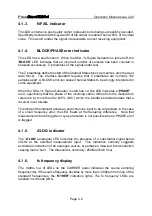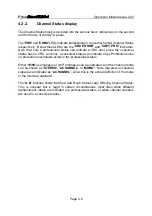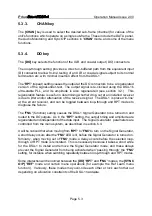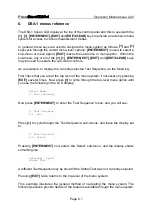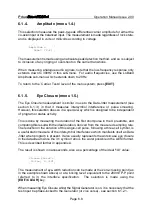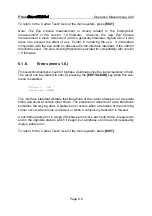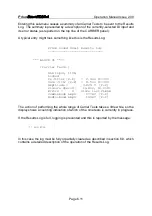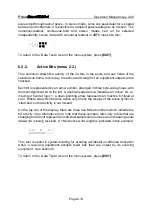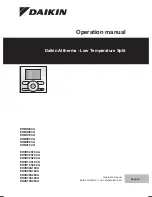
Prism
Operation Manual Issue 2.00
Page 5.3
5.3.3.
CHAN key
The [CHAN] key is used to select the desired sub-frame (channel) for various of the
unit's functions which operate on a single sub-frame. These include the DATA panel,
the Audio Monitoring and Sync O/P sections in 'CHAN' mode, and some of the menu
functions.
5.3.4.
DO key
The [DO] key selects the function of the XLR and coaxial output (DO) connectors.
The loop-through setting provides a direct un-buffered path from the equivalent input
(DI) connector to allow 'in-line' testing of an XLR or coaxial signal subject to its normal
termination etc. with minimal insertion effect from the DSA-1.
The 'RPT' (repeat) setting causes the output at the DO connectors to be a regenerated
version of the signal-under-test. The output signal is re-clocked using the DSA-1's
ultra-stable PLL, and its amplitude is also regenerated (see section 3.2.). This
regeneration feature is useful in determining whether drop-out at an installed receiver
is due to jitter and/or attenuation of the received signal: The DSA-1 is placed 'in-line'
at the errant receiver, and can be toggled between loop-through and RPT modes to
diagnose the failure.
The 'FNC' (function) setting causes the DSA-1 Signal Generator to be turned on and
routed to the DO outputs. As in the 'RPT' setting, the output timing and amplitude are
regenerated and independent of the data input. The Signal Generator parameters are
controlled from the menu system, as described in section 6.4.
It will be noticed that when moving from 'RPT' to 'FNC' to turn on the Signal Generator,
a short delay occurs after the 'FNC' LED is lit, before the Signal Generator is turned on.
Similarly, when moving out of 'FNC' mode, a delay occurs before the selected loop-
through or RPT mode is reinstated. This is necessary because it takes a short while
for the DSA-1 to install and remove the Signal Generator mode, and these delays
prevent the Signal Generator from being activated when 'passing through' the 'FNC'
setting, for instance when switching repeatedly between loop-through and RPT modes.
Some interaction will be noticed between the [DO] 'RPT' and 'FNC' modes, the [SYNC
O/P] 'REF' mode and certain menu operations (for example the Ref Learn menu
function). Variously, these modes may over-ride each other or lock each other out
depending on allocation constraints of the DSA-1 hardware.









